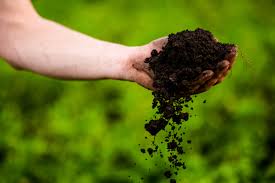 Fertilizing the soil is a regular part of turf maintenance, but it’s also one of the easiest to misunderstand. While companies market all sorts of fertilizers, you can’t tell what’s right for your lawn by just looking at the label. To know exactly what your lawn needs, you need to conduct a soil test. These tips will help you get the most accurate results and act on them accordingly to get the best results from your lawn.
Fertilizing the soil is a regular part of turf maintenance, but it’s also one of the easiest to misunderstand. While companies market all sorts of fertilizers, you can’t tell what’s right for your lawn by just looking at the label. To know exactly what your lawn needs, you need to conduct a soil test. These tips will help you get the most accurate results and act on them accordingly to get the best results from your lawn.
Getting Good Results from Your Test
Expect the lab to take at least two weeks to send you your results. If you want the best results from overseeding, you want to fertilize before laying down seed. That means you should send in your samples at least a month ahead of time, so you can apply the right fertilizer mix and integrate it into the soil before seeding.
Thoroughly clean the tools you use to extract the soil. Cross-contamination can throw off the results.
Conduct separate tests for areas that have different soil. A heavily worked flower bed will have different nutrients than a section of unfertilized turf.
Dig several holes around the area. If you have spots that have thriving or failing plants, include these areas in your digging. Cut chunks of soil at a depth of 6 to 8 inches deep. Mix the soil samples in a bucket, then spread the soil across a newspaper. Once the soil is dry, it’s ready to be packaged and sent to the lab.
The test results will list soil pH, nutrients and toxins. Here’s what you need to know to interpret these results.
Soil Acidity
pH ranges from 1 to 14. 7 is neutral. This is the acidity of plain water. Numbers above 7 are alkaline or “sweet,” while numbers below 7 are acidic or “sour.” Most plants thrive in soil that has a pH between 6.2 and 7.2. Blueberries, rhododendrons, and many weeds prefer more acidic soil. If you live in the central or southwest, expect to have alkaline soil. In the rest of the U.S. and Canada, soil is usually acidic.
Mixing lime into soil makes it less acidic. Sulfur, gypsum, Sphagnum peat moss and organic compost make soil less alkaline. Sulfur and gypsum are the most cost-effective of these soil treatment options.
Nutrients
There are 5 main nutrients required by plants:
– Phosphorus (P)
– Potassium (K)
– Calcium (Ca)
– Magnesium (Mg)
– Sulfur (S)
If you live in a place with sandy soil, you’ll also get measurements for micronutrients. These include iron, copper, manganese, boron and zinc.
Regular fertilizer comes with an “N-P-K” rating based on the percentage of nitrogen, phosphorus and potassium it contains. More is not better. Adding too much of these nutrients can cause burns and even kill plants.
These additions will help you make up for deficiencies in other nutrients:
– Lime and gypsum add calcium.
– Lime and magnesium sulfate (Epsom salt) add magnesium
– Gypsum, potassium sulfate, manure, compost and sul-po-mag add sulfur.
Keep in mind that lime makes soil alkaline, while sulfur and gypsum make soil acidic. You may be able to adjust nutrient levels and pH using one addition, or you may want to avoid them to keep from throwing off soil acidity.
Extra micronutrients won’t harm plants, so manufacturers make fertilizers and fertilizer additives with all of these nutrients for one step treatment.
Toxic Chemicals
Soil toxicity tests look for levels of Aluminum (Al) and lead (Pb.) Aluminum makes it hard for plants to build roots, especially in acidic soil. Acid-loving plants deal with high aluminum content better than other plants. While it’s hard to remove aluminum from soil, decreasing soil acidity will make it harder for plants to absorb this toxin. Adding gypsum can reduce absorption by forcing plants to take on calcium instead.
Lead won’t keep plants from growing. However, vegetables can be unsafe to eat if they contain more than 300 ppm (parts per million) of lead. Children can absorb lead directly from soil with a content over 150 ppm. If the soil has more than 400 mg/kg of lead, don’t grow leafy vegetables or root vegetables in it. Keeping soil pH between 6.5 and 7 can reduce plant absorption. Anything over 1,000 mm/kg is unsafe. Avoid direct contact and do not grow food in the soil. Apply mulch to the area and adjust the soil pH to reduce the transfer of lead to you and your plants.
We Can Help You Keep Your Equipment Working Through the Season
Billy Goat Parts has everything you need to keep your Billy Goat equipment working, whether you’re clearing, overseeding, fertilizing or dethatching your lawn. We’re an authorized dealer for Billy Goat and their manufacturing partners, which means we carry OEM parts for everything on your equipment. Want to get more out of your Billy Goat by adding accessories? We carry those, too. To order, visit us at www.billygoatparts.com. We ship across the United States and Canada.
